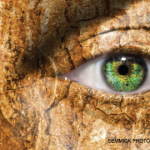It is most important to witness the problem and to reproduce the symptoms during the exam if possible. I like to clean the slate and not accept a diagnosis given to the patient until I review the evidence myself.
I find it helpful to think about a cause of symptoms in categories, like pain that is inflammatory or misery that is mechanical in nature. Another method is to try to link the symptom or sign to a biological process, such as malignancy, metabolic, autoimmune, etc. I recognize that, often, a disease does not match the textbook description and that features may emerge with time. Therefore, designing a targeted work-up and then reevaluating at some set interval—or if new symptoms emerge—is key. Serial observations often solve the mystery.
Finally, I recognize my limitations and seek consultation to discuss the case in detail with expert colleagues. This guides my workup and often solves the tough cases.
TR: How do you approach the concept of uncertainty when entertaining a diagnosis for a patient?
Dr. Wigley: I learned a long time ago that what we think is the gospel today is often changed with new discoveries. We no longer bleed every patient to remove evil factors. When I was in medical school, we admitted patients with hepatitis for weeks of bed rest.
I deal with a disease—scleroderma—that in the early stages can be challenging to diagnosis.
Patients often present with nonspecific symptoms (e.g., fatigue, weight loss, joint and muscle aches) that precede the full expression of the disease. When a patient presents with some features and I cannot make a definite diagnosis, I manage the problem that I can define. For example, problematic Raynaud’s may be treated with a vasodilator alone if other clinical features of a disease process are still occult. I emphasize to the patient that the diagnosis is not as important as defining a sensible, safe management plan of an active problem and then carefully revisiting the situation.
If I sense the patient is acutely ill or a disease process is progressing, then the laboratory investigations are expanded to seek clinically occult disease. If the patient is clinically doing well on symptomatic intervention, then serial observations and appropriate new studies are carefully planned.
Chapter two of the disease story is often needed to make a diagnosis.
 Jason Liebowitz, MD, is an assistant professor of medicine in the Division of Rheumatology at Columbia University Vagelos College of Physicians and Surgeons, New York.
Jason Liebowitz, MD, is an assistant professor of medicine in the Division of Rheumatology at Columbia University Vagelos College of Physicians and Surgeons, New York.



